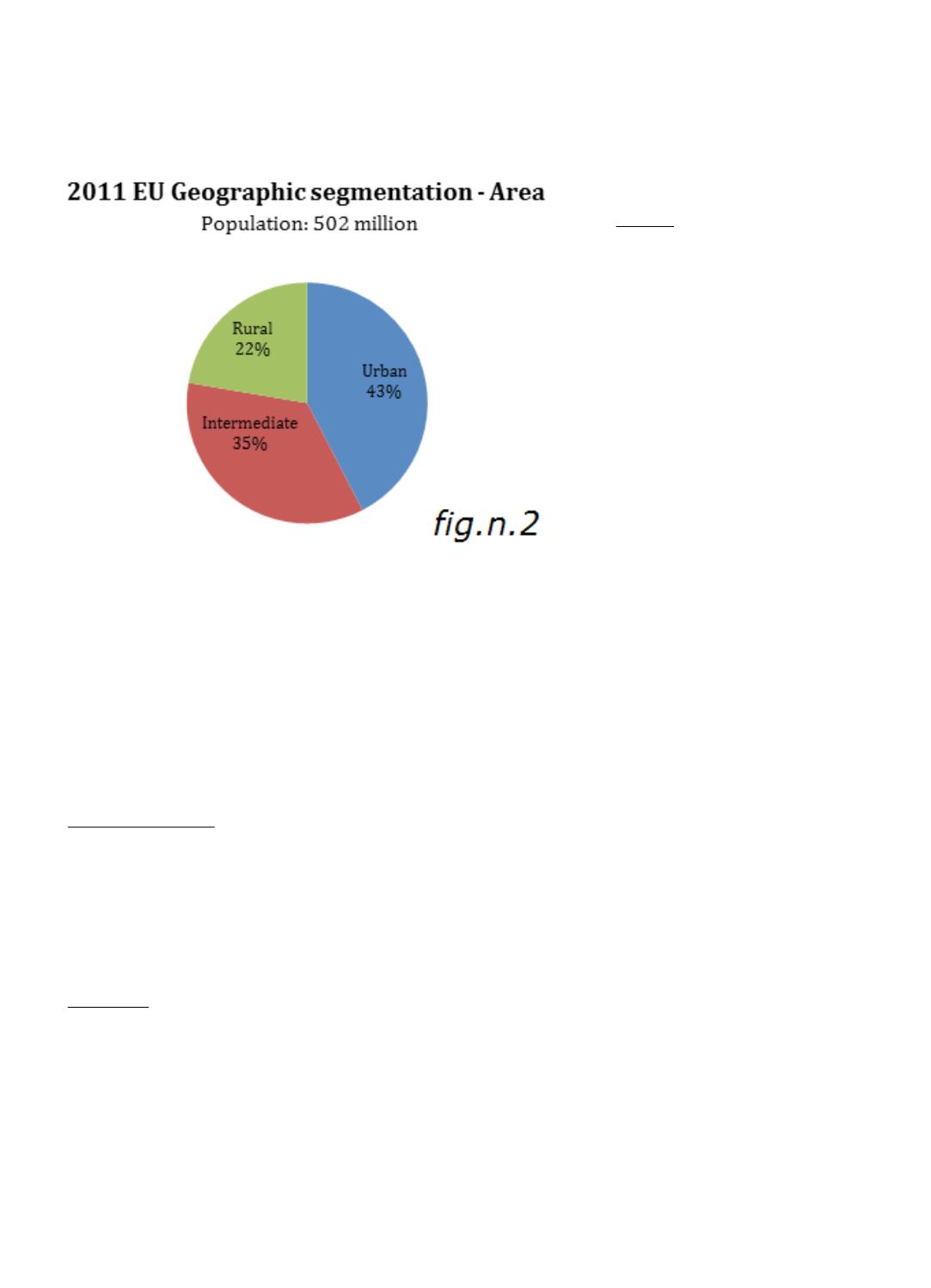

51
economic, diversity of languages (German, French, English,
Italian, Spanish, Portuguese, Polish, Croatian, Greek, etc.).
Thus, it is necessary to do a more accurate investigation mast
when you want to deal with different European markets.
The following data is a synthetic representation of European
segmentation:
6.1 Geographic segmentation
6.1.1 Areas (town, rural)
The EU population became more urban.
In 2011, 502 million people lived in the EU, of which 42.4 %
in a predominantly urban region, 35.3 % in an intermediate
region and 22.3 % in a predominantly rural region under the
updated Urban-rural typology. ( see fig.n.2)
6.1.2 Climate
Also for the climate we can see big differences between the
average temperatures recorded.
In January you can go from an average temperature of -1 °
C to Helsinki to Valencia of + 16.1 ° C, or in August, you can
switch from + 19.8 ° C in Helsinki at + 32.3 ° C Athens
6.2 Demographic Segmentation
6.2.1 Age
The progressive aging of the European
population is evidenced by the graphs
below. ( see fig.n.3)
The values shown are the average
but, in some countries, this change is
strongest.
6.2.2 Revenue
People aged 65 and over are generally
retired.
From several studies, we understand
that income decreases with age.
Households with main income earners
aged between 65 and 79 spent 13% of their consumption
budget on recreation, entertainment and culture such as
travel, visits to the theatre, hobbies, books or periodicals.
6.3 Psycographic Segmentation
6.3.1 Lifestyle
97% of generation 65+ are independent.
Most people would prefer to still live at home as they get
older.
In the age group 65+, women are widowed much more
often than men.
DVD players and recorders were significantly less wide-
spread in households with main income earners aged 55
and over.
This does not apply to televisions – the one “classic
equipment item”, which – irrespective of age – has been a
fixed component in almost all households now.
Compare the younger generation, older people have not
grown up with the Internet and were less likely to use it
during their working lives. This explains why they still use


















